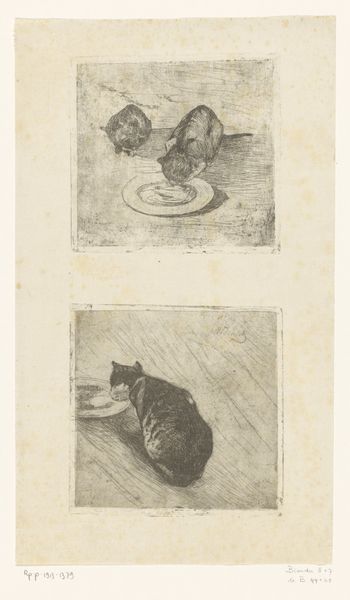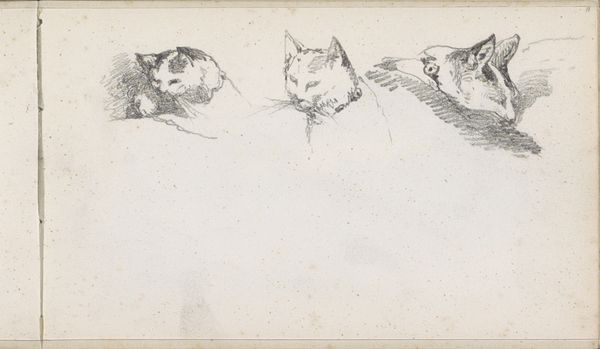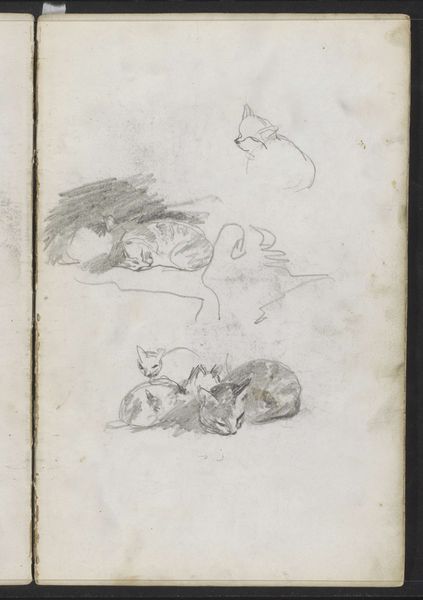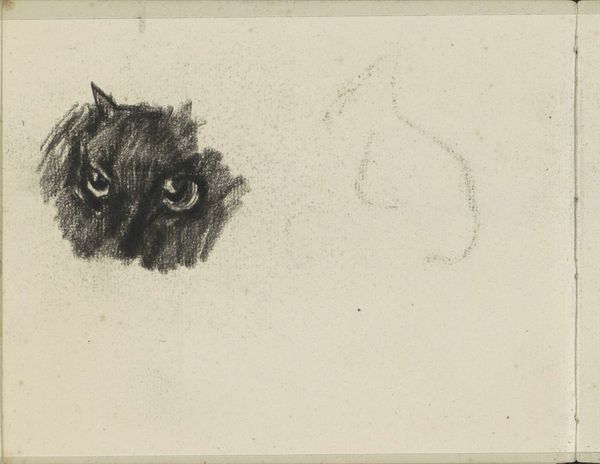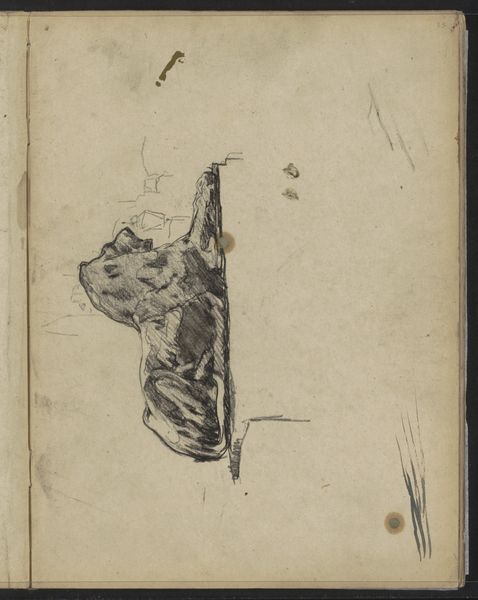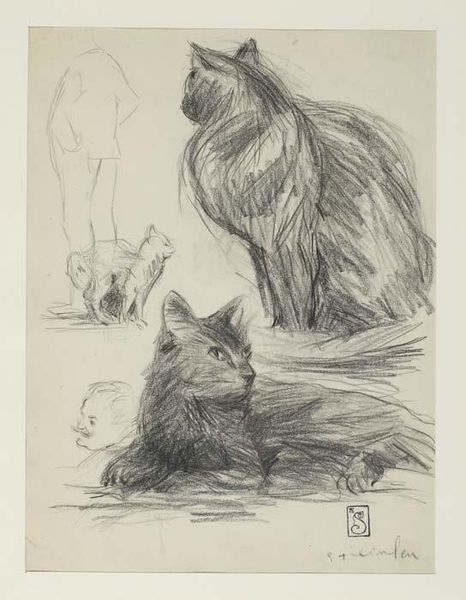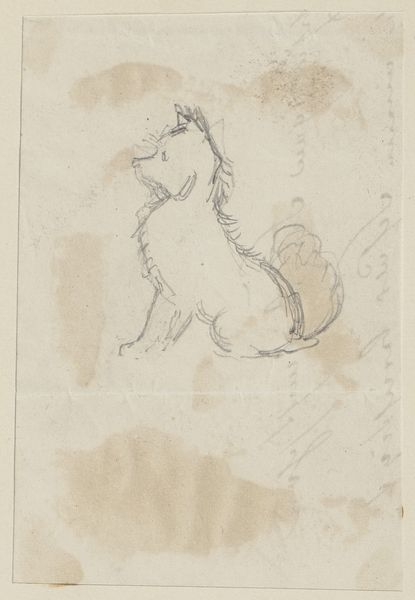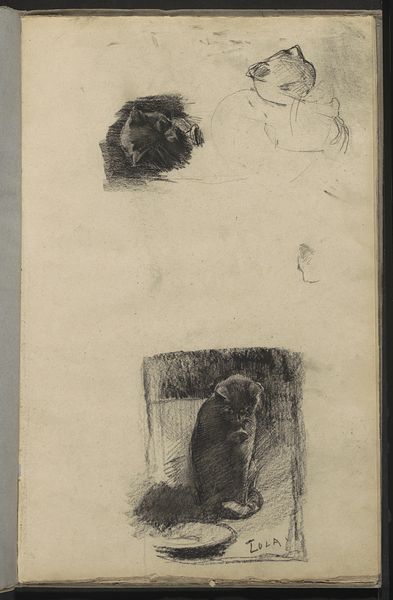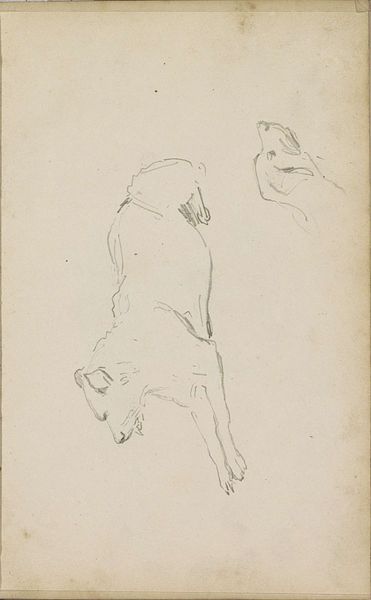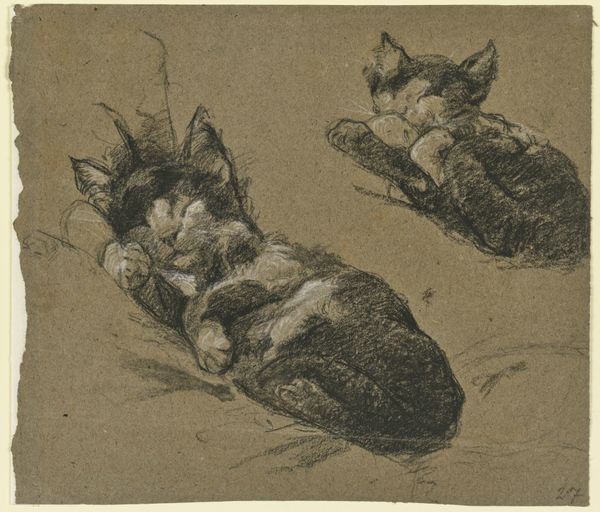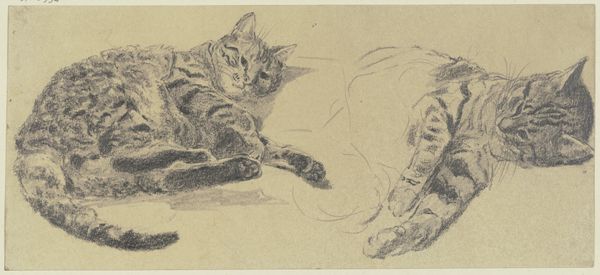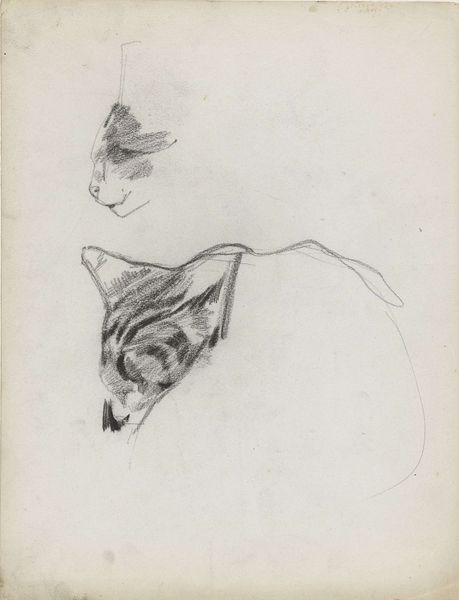
drawing, pencil, graphite
#
portrait
#
drawing
#
animal
#
impressionism
#
pencil sketch
#
figuration
#
sketch
#
pencil
#
graphite
#
sketchbook drawing
Copyright: Rijks Museum: Open Domain
Editor: This is Willem Witsen’s "Studies van poes Lola," a pencil and graphite drawing from around 1884 to 1887, currently at the Rijksmuseum. I’m immediately struck by the sketch-like quality and the cat’s very direct gaze. What story do you think this drawing tells? Curator: Well, considering the historical context, it’s fascinating to see an artist of Witsen’s stature devoting his skill to depicting a domestic animal. This challenges the grand narratives of art typically focused on portraits of the elite or historical events. The presence of "Lola" hints at changing societal values. We see a rising interest in the everyday, in capturing fleeting moments. Consider the social implications of artists depicting subjects beyond the conventional hierarchy. Why choose a cat? What was its societal significance in the late 19th century? Editor: That's a perspective I hadn't considered. I guess I just saw it as a simple drawing of a cat. But you’re saying that Witsen choosing a cat is a kind of statement in itself? Curator: Precisely! It also makes me think about Impressionism, its development and dissemination throughout Europe at this time, with artists breaking from the rigidity of academic traditions. They sought authenticity, to capture the immediacy of lived experience. Could this drawing be a study in realism, an attempt to observe the world as it truly is, devoid of academic pretension? The act of drawing, often considered preparatory, becomes the art itself. What do you think about that relationship? Editor: That's really interesting! I hadn't really thought about how a simple drawing could reflect such significant cultural shifts. Thanks for helping me see that. Curator: My pleasure. Looking at it now, I wonder what other 'minor' artforms or subject matters are currently being overlooked. Perhaps in them lies the key to understanding the complex, multifaceted society of our time.
Comments
No comments
Be the first to comment and join the conversation on the ultimate creative platform.

